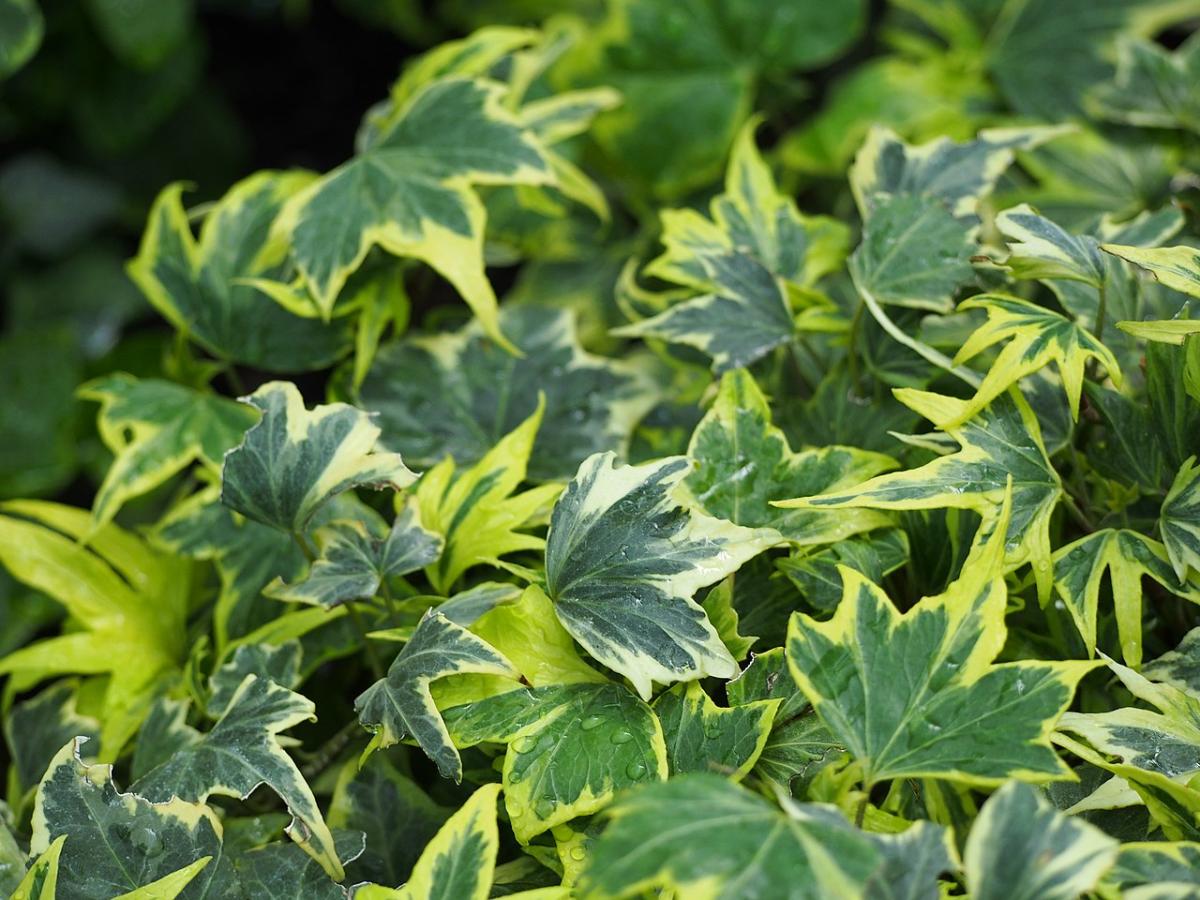
Image – Wikimedia / Agnieszka Kwiecień, Nova
Ivy is a very popular fast-growing climbing plant in gardens. Its easy cultivation and maintenance, in addition to its resistance to pests and diseases, have made it the favorite of all those who want to cover a wall or a lattice in the shortest possible time while spending the least amount of money. And, being so adaptable, the sale price is really interesting: for 10 euros you can have a copy of two meters that will accomplish its mission in less time than you expect.
But Did you know there are different types of ivy? Some are better known than others, but all of them need the same care, so you will only have to wonder which one to choose.
Origin and characteristics of ivy
Ivy belongs to the botanical genus Hedera, comprising 15 species spread across Africa, Asia, Macaronesia and Europe. It is an evergreen climbing plant that can be used both as a crawler and to climb walls or lattices. It can reach 30 meters in height, which will force us to prune it at the end of winter if we want to control its growth.
Its leaves are lobed when young, but as they complete their development they become whole and cordate. It has small greenish-yellow flowers grouped in 5cm inflorescences that sprout in summer. The fruit is a berry of about 7mm green-black, very poisonous for the human being.
Types of ivy
What are the most popular types of ivy? Although they are all very similar, the reality is that there are several that are very beautiful, like these:
ivy canariensis

Image – Wikimedia / Krzysztof Ziarnek, Kenraiz
It is the Canary ivy. It is an evergreen climber native to the Canary archipelago, very similar to the Ivy helix to the point that many consider that H. canariensis is a variety of the H.helix larger and lustrous leaves.
colchica hedera

Image – Wikimedia / Salicyna
The colchica hedera is a species known as Persian ivy or Persian ivy that reaches a height of 30 meters. As its common name suggests, it is native to Persia, and there are several very interesting cultivars.
For example, “Dentata” has serrated leaf margins, or “Sulfur Heart” has green leaves with a yellowish-green center.
Ivy helix

The Ivy helix is common ivy, which grows wild in Europe, Africa and Asia. The leaves are simple, lobed, and dark green. It can reach a height of up to 30 metersand it is fast growing.
Hibernian ivy

Image – Wikimedia / MichaelMaggs
The Hibernian ivy It is one of the climbing plants that grow wild in Europe, specifically on the Atlantic coasts. Its leaves are glossy dark greenand lobed. The fruits are bluish-black berries.
hedera nepalensis

Known as the Himalayan ivy, it is a climber native to Nepal and Bhutan that reaches a height of up to 30 meters. Its leaves are dark green, lobed, and glabrous green.
Care guide
Now that you know some types of ivy, maybe you want to know how to take care of them, right? Well, here is a care guide:
Weather
Ivy grows in temperate climates, where temperatures remain between the -4ºC and 40ºC. If winter is much colder in your area, you can take advantage of those months to have it inside your home, in a very bright room.
Location
It will depend on where you place it: if it will be outside, it is recommended that the ivy be kept in semi-shadebecause if the sun hits it directly, it may not grow in conditions.
In the event that you are going to be indoors, put it in a room with a lot of light, and away from fans, air conditioners, etc. Indoor drafts damage leaves, so the further away you are from them the better.
Irrigation
Water it about 3 times a week in summer (more if you have it outside or if the environment is very dry) and about two a week the rest of the year and you will have a healthy plant for many years.
Pour water until all the earth is moistened, so that it hydrates well.
Subscriber

During the spring and summer months you can fertilize it from time to time with fertilizers such as guano (for sale here!), mulch (for sale here!), or fertilizers for green plants (for sale here!).
Pruning
Important prune ivy in late winter to keep it under control. Trim the stems that you see that are developing too much, so you will be able to maintain their shape.
Multiplication
Ivy multiplies by seeds or stem cuttings, from spring to summer.
- Seeds: they are sown in pots with universal substrate, in pots. Put about 2 or 3 in each container, and keep them in semi-shade. They will germinate in about 20 days.
- Cuttings: they must be taken from stems that are at least 2 years old. Then, you just have to impregnate them with rooting hormones, and plant them in pots with vermiculite or coconut fiber. If all goes well, they will root in about 15 days.
What did you think of the different types of ivy? Do you know others?

